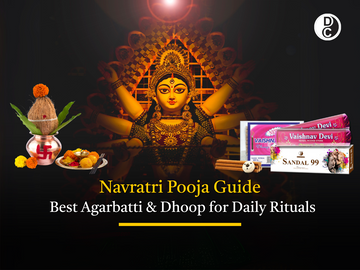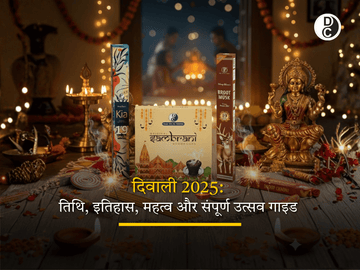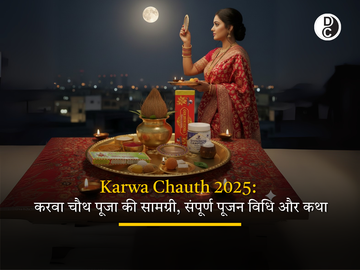Navratri Pooja Guide: Best Agarbatti & Dhoop for Daily Rituals
Sep 22, 2025
Navratri is one of the most loved festivals in India. It is celebrated to honor Goddess Durga and her nine forms. For nine days, families perform Navratri pooja with devotion. The prayers help create calm, focus, and peace. Lighting agarbatti and dhoop is an important part of the rituals, as their fragrance makes the space pure and sacred.
This guide will walk you through the meaning of the pooja, the items you need, and how to pick the right incense. The idea is to keep everything simple so anyone can follow it at home.
What Navratri Pooja Stands For
Durga Navratri pooja is done to seek blessings for health, strength, and harmony. Each day connects to one form of the Goddess. The rituals usually include offerings like flowers, fruits, and incense. Agarbatti and dhoop are lit to cleanse the space and to create a calm mood for prayer.
Many people wonder about the right Navratri pooja muhurt. The exact time changes depending on region and tradition. Still, mornings are usually preferred, while some families also keep an evening aarti.
Things to Gather Before Pooja
Families usually prepare a Navratri pooja saman list before the festival begins. This makes the nine days smoother. The Navratri pooja samagri is not complicated but holds great importance.
Basic Navratri Pooja Items you will need:
-
A Kalash filled with clean water
-
A coconut to place on the Kalash
-
Fresh mango leaves
-
A bunch of fresh flowers
-
Seasonal fruits
-
Betel leaves and nuts (पान के पत्ते और सुपारी)
-
Kumkum and haldi
-
A small amount of rice
-
A diya for lighting
- Agarbatti and dhoop for fragrance
These are the basic items needed. Families may add extra elements depending on their customs.
Navratri Pooja Vidhi at Home
The Navratri pooja vidhi at home follows a few steady steps:
-
Clean the house and pooja corner.
-
Place the Kalash filled with water, mango leaves, and a coconut.
-
Light up the incense and the diya.
-
Offer fruits, flowers, and sweets before the Goddess.
-
Say prayers or chant mantras with focus.
-
Perform aarti with agarbatti and dhoop.
Morning is seen as the best Navratri pooja time. Some families also perform the rituals again in the evening. The main thing is to do it with a steady mind.
Simple Pooja Thali Decoration
The thali is where all basic prayer items are kept. Navratri pooja thali decoration should stay simple and clean. A plate made of steel, brass, or silver is enough. Keep kumkum, rice, diya, flowers, and incense arranged neatly on it.
If you wish, you can add flowers or a piece of cloth for decoration. But what matters most is order and cleanliness, not heavy designs.
Why Agarbatti and Dhoop Are Important
Incense has always been part of worship. During Navratri pooja, lighting agarbatti and dhoop is seen as a mark of respect. The rising smoke fills the space with fragrance and makes the mind quiet.
Agarbatti gives light fragrance and less smoke. Dhoop is stronger and lasts longer. Using both together is common, and they complete the pooja in a natural way.
Choose the Right Agarbatti
The type of incense you use affects the mood of prayer. Choose agarbatti, which is made with natural herbs and oils. Avoid ones that smell too sharp or use heavy chemicals. The fragrance should feel steady and gentle.
For Durga Navratri pooja, sandalwood and rose incense are often chosen. They stand for purity and focus. Jasmine incense is another good option, as it is linked with devotion and peace.
Find the Right Dhoop
Dhoop is different from incense sticks. It is thicker, made without bamboo, and produces more smoke with a deeper scent. People light it to clear energy and invite positivity.
During Navratri pooja, guggal dhoop is used regularly. Its earthy smell is believed to drive away negative energy. Sambrani dhoop is also used because of its calming effects. Natural cones or sticks are always better for pooja.
Create the Right Atmosphere
The place for prayer should be clean, quiet, and uncluttered. Keep the thali, diya, agarbatti, and dhoop in order. Light the incense along with the diya to set balance. The fragrance will help keep your mind steady.
It is also helpful to follow the same Navratri pooja time each day. A routine builds discipline and keeps the practice consistent throughout the nine days.
Discipline During the Nine Days
Navratri is also about lifestyle discipline. Many people follow a simple diet and avoid certain foods. Keeping the home clean and peaceful is also seen as part of the practice.
Lighting incense every day is one way to mark the start and end of prayers. Agarbatti and dhoop signal the mind to shift from daily work to a time of devotion.
Conclusion
Navratri is a festival of prayer and respect. Doing Navratri pooja with the right Navratri pooja saman, a clean thali, and natural incense makes the rituals more meaningful.
The pooja arrangement can be simple. A clear mind and simple devotion matter more. Agarbatti and dhoop help create the sacred atmosphere needed for this time of worship. For a pure and calming fragrance during your Navratri pooja, choose dhoop from Dhoop Chaon & Co.
FAQs
1. What is the right time for Navratri pooja?
Morning is the most common Navratri pooja time. Aarti is also performed in the evenings. Choose a time when you can sit calmly without breaks.
2. Which agarbatti is suitable for Navratri pooja?
Sandalwood, rose, and jasmine incense are the best. Their soft scents are linked to purity and peace.
3. What things should I keep for a Navratri pooja?
The pooja usually requires a Kalash, coconut, mango leaves, rice, fruits, flowers, kumkum, haldi, a diya, and incense like agarbatti or dhoop.
4. How can I decorate the Navratri pooja thali?
Keep it simple. Use a clean plate and place kumkum, rice, diya, incense, and flowers in order. A few flowers for decoration are enough.
5. Why are agarbatti and dhoop used in pooja?
Agarbatti gives a light fragrance with less smoke. Dhoop gives a stronger fragrance with more smoke. Both are part of Durga Navratri pooja and are used to purify the space.







